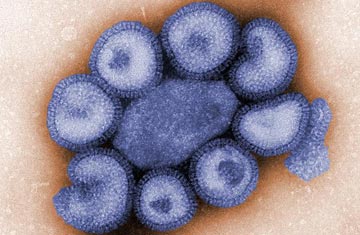
The H1N1 virus
One thing we know now is that H1N1 is not as serious as health officials first feared, when reports of large numbers of flu deaths began emerging from Mexico a month ago. As the World Health Organization (WHO) and Centers for Disease Control and Prevention (CDC) have emphasized repeatedly over the past several weeks, nearly all of the more than 12,000 infections worldwide have been fairly mild, with few patients needing hospitalization. The small percentage who have had serious disease or died have also often had pre-existing health problems that may have complicated the infection. A CDC survey of 30 Californians who were hospitalized with H1N1 by May 17 found that two-thirds of the patients had at least one underlying health condition, including chronic lung or heart disease, diabetes and obesity — a condition that by itself can hinder breathing and complicate flu infections. Five patients were pregnant, which may also increase the risk of flu complications, said Dr. Anne Schuchat, interim deputy director of the CDC's science and public health program.
But not every victim was sick with something else. One of the most recent H1N1-related deaths in the U.S., a 44-year-old man in Missouri, involved no pre-existing conditions. And that points to another characteristic of the virus that concerns health officials — it tends to infect the relatively young. While the California cases varied widely in age, from 29 days to 89 years, the median age was 27.5 years. Overall, about 40% of those hospitalized with H1N1 in the U.S. have been between 18 and 50; more than 60% of all infections, including those that did not require hospitalization, have been in people younger than 25.
That's unusual for the flu — and worrying for doctors, since the last time a flu struck down the young and healthy was during the 1918 Spanish flu pandemic. Further, the new H1N1 appears to spread more easily than the seasonal flu, according to a preliminary study in Science.
The good news, at least for older people, is that they may have greater natural immunity to the new flu, possibly because they have been exposed to more flu viruses in the past — some of which were similar to swine flu. In an early lab test conducted by the CDC, scientists injected the H1N1 virus into blood samples that were taken from healthy adults before swine flu emerged. Antibodies to the flu were found in at least 30% of the samples from adults 60 and older, suggesting some amount of protection against the virus; the same immunity was seen in fewer than one in 10 samples from younger people.